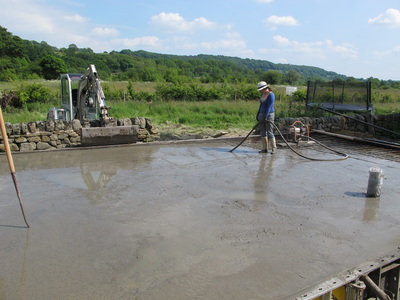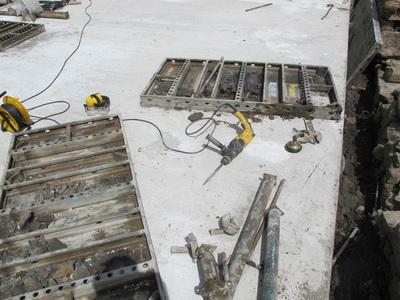|
Pouring concrete is stressful on any site, once its not turning in the mixer it starts curing whether you're ready or not. Too hot, too cold, too wet - the weather can always throw a spanner in the works. I was anxious for months ahead, particularly because of our awkward site access. It was a hot day, and the time between loads was longer than we would have liked, so it started going off fast, but we changed the spec to make it wetter & in the end it was all poured. The driver was somewhat traumatised by our lane (narrow with lots of overhanging vegetation) and by our turning area (tight), but by the third load he had mastered it all. Sustainable? See earlier post on why we used concrete - resilience and robustness. We specified a 40%mix of PFA (Pulverised Fly Ash - waste from power stations) to reduce the cement content, but there is still a heavy carbon footprint associated with its use. We consider we made the best choice in the circumstances - it will also allow the use of further heavyweight materials at low level, increasing the thermal mass/ comfort of the final building & reducing heating/ cooling loads. The lower part of the raft foundation will be reburied, leaving 150mm or so exposed above ground level.
0 Comments
Leave a Reply. |
AuthorMike Hawkins is a co-op member and is responsible for the design and management of the build. He'll also live in it when its finished - hooray! He teaches future architects at Leicester DeMontfort and Birmingham City universities. Archives
November 2017
Categories |
This site is under construction






 RSS Feed
RSS Feed
